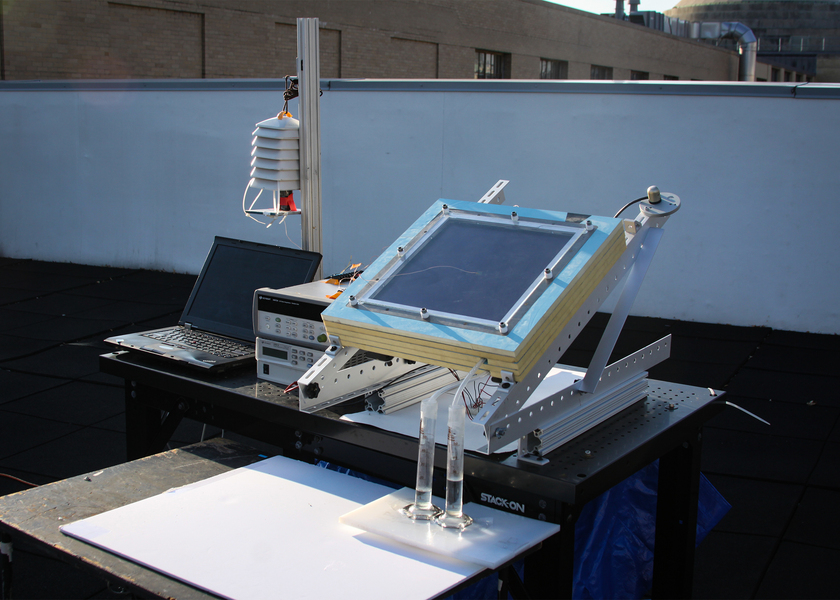Solar-powered system extracts drinkable water from “dry” air
16. 10. 2020 | MIT | www.mit.edu
Researchers at MIT and elsewhere have significantly boosted the output from a system that can extract drinkable water directly from the air even in dry regions, using heat from the sun or another source.
The system, which builds on a design initially developed three years ago at MIT by members of the same team, brings the process closer to something that could become a practical water source for remote regions with limited access to water and electricity. The earlier device demonstrated by researchers provided a proof of concept for the system, which harnesses a temperature difference within the device to allow an adsorbent material — which collects liquid on its surface — to draw in moisture from the air at night and release it the next day. When the material is heated by sunlight, the difference in temperature between the heated top and the shaded underside makes the water release back out of the adsorbent material. The water then gets condensed on a collection plate.

But that device required the use of specialized materials called metal organic frameworks, or MOFs, which are expensive and limited in supply, and the system’s water output was not sufficient for a practical system. Now, by incorporating a second stage of desorption and condensation, and by using a readily available adsorbent material, the device’s output has been significantly increased, and its scalability as a potentially widespread product is greatly improved, the researchers say.
Read more at MIT
Image Credit: MIT
-jk-




